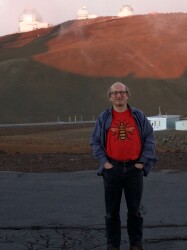BibTex format
@article{Marques-Chaves:2018:1538-4357/aaabb7,
author = {Marques-Chaves, R and Perez-Fournon, I and Gavazzi, R and Martinez-Navajas, PI and Riechers, D and Rigopoulou, D and Cabrera-Lavers, A and Clements, DL and Cooray, A and Farrah, D and Ivison, RJ and Jimenez-Angel, CE and Nayyeri, H and Oliver, S and Omont, A and Scott, D and Shu, Y and Wardlow, J},
doi = {1538-4357/aaabb7},
journal = {Astrophysical Journal},
title = {The strong gravitationally lensed Herschel galaxy HLock01: optical spectroscopy reveals a close galaxy merger with evidence of inflowing gas},
url = {http://dx.doi.org/10.3847/1538-4357/aaabb7},
volume = {854},
year = {2018}
}

